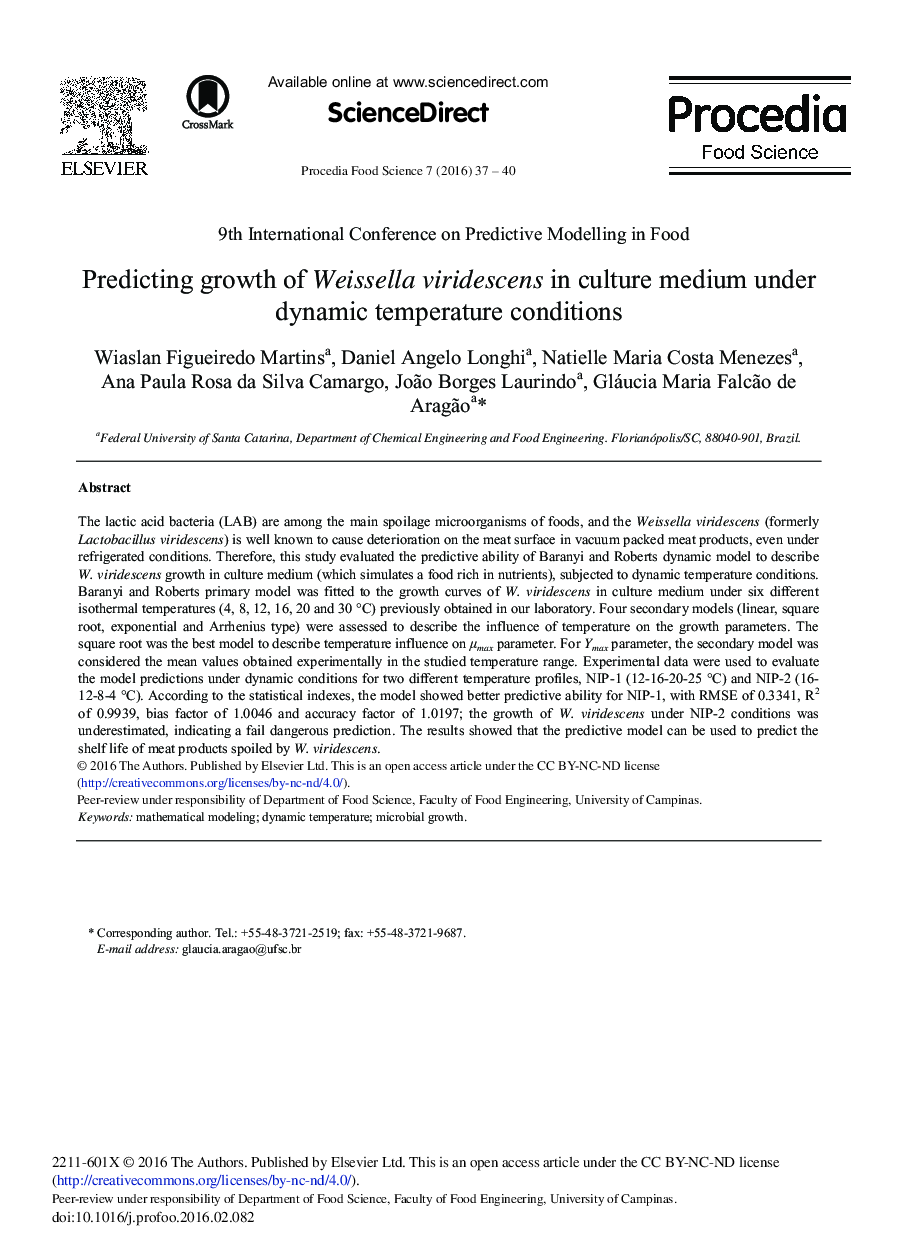| Article ID | Journal | Published Year | Pages | File Type |
|---|---|---|---|---|
| 1266046 | Procedia Food Science | 2016 | 4 Pages |
The lactic acid bacteria (LAB) are among the main spoilage microorganisms of foods, and the Weissella viridescens (formerly Lactobacillus viridescens) is well known to cause deterioration on the meat surface in vacuum packed meat products, even under refrigerated conditions. Therefore, this study evaluated the predictive ability of Baranyi and Roberts dynamic model to describe W. viridescens growth in culture medium (which simulates a food rich in nutrients), subjected to dynamic temperature conditions. Baranyi and Roberts primary model was fitted to the growth curves of W. viridescens in culture medium under six different isothermal temperatures (4, 8, 12, 16, 20 and 30°C) previously obtained in our laboratory. Four secondary models (linear, square root, exponential and Arrhenius type) were assessed to describe the influence of temperature on the growth parameters. The square root was the best model to describe temperature influence on μmax parameter. For Ymax parameter, the secondary model was considered the mean values obtained experimentally in the studied temperature range. Experimental data were used to evaluate the model predictions under dynamic conditions for two different temperature profiles, NIP-1 (12-16-20-25°C) and NIP-2 (16-12-8-4°C). According to the statistical indexes, the model showed better predictive ability for NIP-1, with RMSE of 0.3341, R2 of 0.9939, bias factor of 1.0046 and accuracy factor of 1.0197; the growth of W. viridescens under NIP-2 conditions was underestimated, indicating a fail dangerous prediction. The results showed that the predictive model can be used to predict the shelf life of meat products spoiled by W. viridescens.
